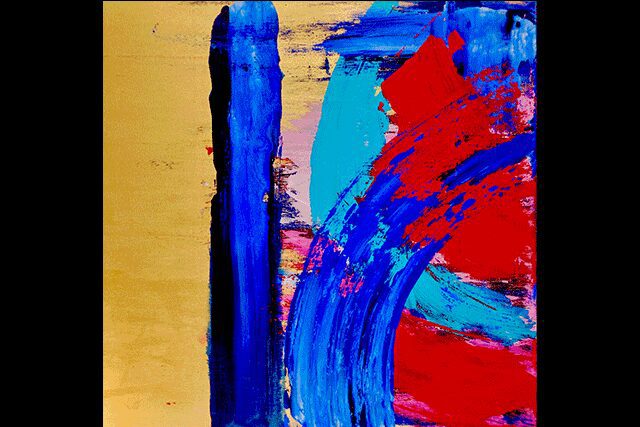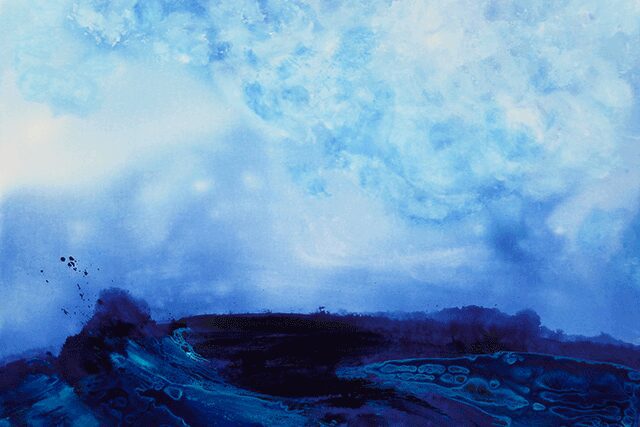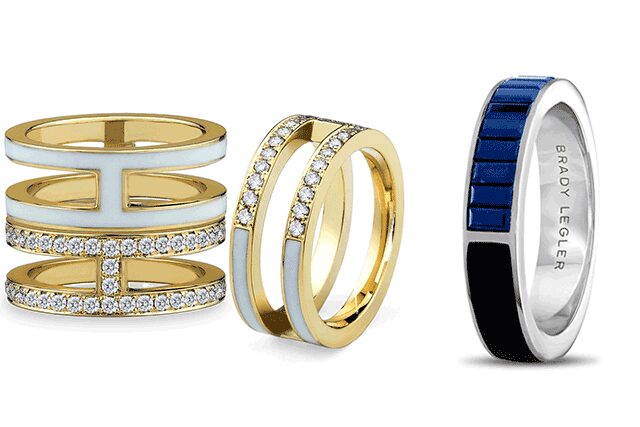After the passing of his grandmother, the Kansas City-raised Brady Legler was floundering, hitting rock bottom after he was kicked out of college for partying too much. To get out of his rut and keep his grandma’s spirit alive, he started repurposing her costume jewelry into new pieces, at first only for friends and relatives, but soon he began to sell them at local trunk shows. This led him to New York for a meeting where he was encouraged to apply to Parsons School of Design.
He’s lived there ever since, designing jewelry and working on his paintings, which walk the line between abstract expressionism and colorism, all unified by the color blue. That’s because when his father was diagnosed with anaplastic thyroid carcinoma, one of the deadliest cancers in the world, a neighbor who studied meditation suggested he imagine his father’s cancer cells turning blue as a healing practice. With his dad now cured, Legler’s use of the color has become his trademark. “It’s trickled into all of my designs,” he says. “Every painting I do, even if it’s fully red, there’s a layer of blue underneath it.” The motif became the central theme of Chromatic Connection, a charity art show dedicated to suicide prevention that he co-ran from June to August at hometown gallery Eva Reynolds Fine Art Gallery. “Color is happy; the healing properties of it [are] unexplainable. That was the underlying message of the show—that art can heal.”
That connection has led to more opportunities. For instance, Sargasso Sea—an abstract painting resplendent in his signature dark blue with black tones—drew the attention of San Antonio-based company Rug Studio, which chose to print it onto a rug, creating a relationship that has lasted eight years.
Now 29, and with a successful business, Legler has continued to expand with a new jewelry line, as well as wallpaper, with commissions for a residential penthouse in Manhattan’s famed Plaza Hotel and a restaurant in Kansas City. Juggling all these projects and mediums could be overwhelming, but “that works for me,” he says. “We’re in the design world. You have to enjoy it to appreciate it, and if you don’t, what’s the point?”





